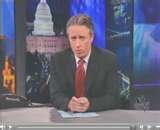Demand more demand!

Dean Baker has a very understandable explanation of why the only thing we need to fear is fear of stimulus spending:
To better understand this demand problem, suppose that we had a super effective counterfeiter: someone who could make near perfect copies of $50 or $100 bills. Suppose this person printed up $2 trillion of counterfeit money and began to spend it on all sorts of items. Our counterfeiter buys up houses and cars. They pay for incredibly lavish parties and trips. They hire all sorts of servants, groundskeepers and investment advisors.
What would be the effect of this counterfeiting scam on the economy? In the current situation it would provide an enormous boost to GDP and create millions of jobs. After all, everyone thinks the money is real. It is no different if the counterfeiters and his underlings spend $2 trillion of counterfeit money than if firms suddenly start investing their hoards of cash or households begin to spend again as though the housing bubble had never collapsed.
That may sound troubling, but this is because the current economic situation is so extraordinary. In normal times the economy is, at least partially, supply constrained. Collectively we want more goods and services than the economy is capable of producing. If our counterfeiter manufactured his $2 trillion in normal times, it likely would cause a serious problem of inflation. There would be more demand for cars, houses and other goods than the economy was able to supply. This would push up prices and wages leading to a cycle of inflation that would persist until policy measures were taken to slow the economy or the counterfeiter was caught.
But in our demand-constrained economy there is no problem of inflation. The economy can produce more of almost anything right now. The reason that we are not doing it is simply the lack of demand.
The interesting part of the counterfeiter story is that his $2 trillion of phony money will not create problems even in the long-run, assuming that he is eventually shut down. Suppose that the counterfeiter’s lavish spending gets the economy back towards full employment around 2012, at which point he gets nailed by the FBI who finally figure out how to recognize the counterfeits.
At that point, the $2 trillion will be grabbed out of circulation and destroyed. Assuming that the economy is strong enough at this point to remain near full employment even as this counterfeit wealth disappears, then there would be no lasting damage from the episode. The fictional wealth had generated demand when the economy needed it, but then was pulled out of circulation at the point when it could have generated inflation and competed away goods and services from others.
While it is unlikely we will see a successful counterfeiter on this scale, the government and the Federal Reserve Board can imitate the counterfeiter’s actions. This is the story of fiscal stimulus: safe, fun and legal. Instead of putting people to work filling the counterfeiter’s frivolous whims, we could have them work building up the economy and meeting important needs. The list of necessary tasks is long and well-known.
As is the case with the counterfeiter’s illicit stash, the stimulus spending need not even create any long-term debt burden. The Fed could simply buy and hold the bonds issued to finance the spending. When the economy returns to more normal levels of employment it would raise interest rates, as it always does, to prevent inflation from posing a serious risk.
It’s all very simple. Unfortunately, our Washington politicians lack the courage to take the necessary steps to get the economy back on its feet. That means that the best hope we have right now might be a very successful counterfeiter.
Anybody ready to start printing in the basement?












No comments:
Post a Comment